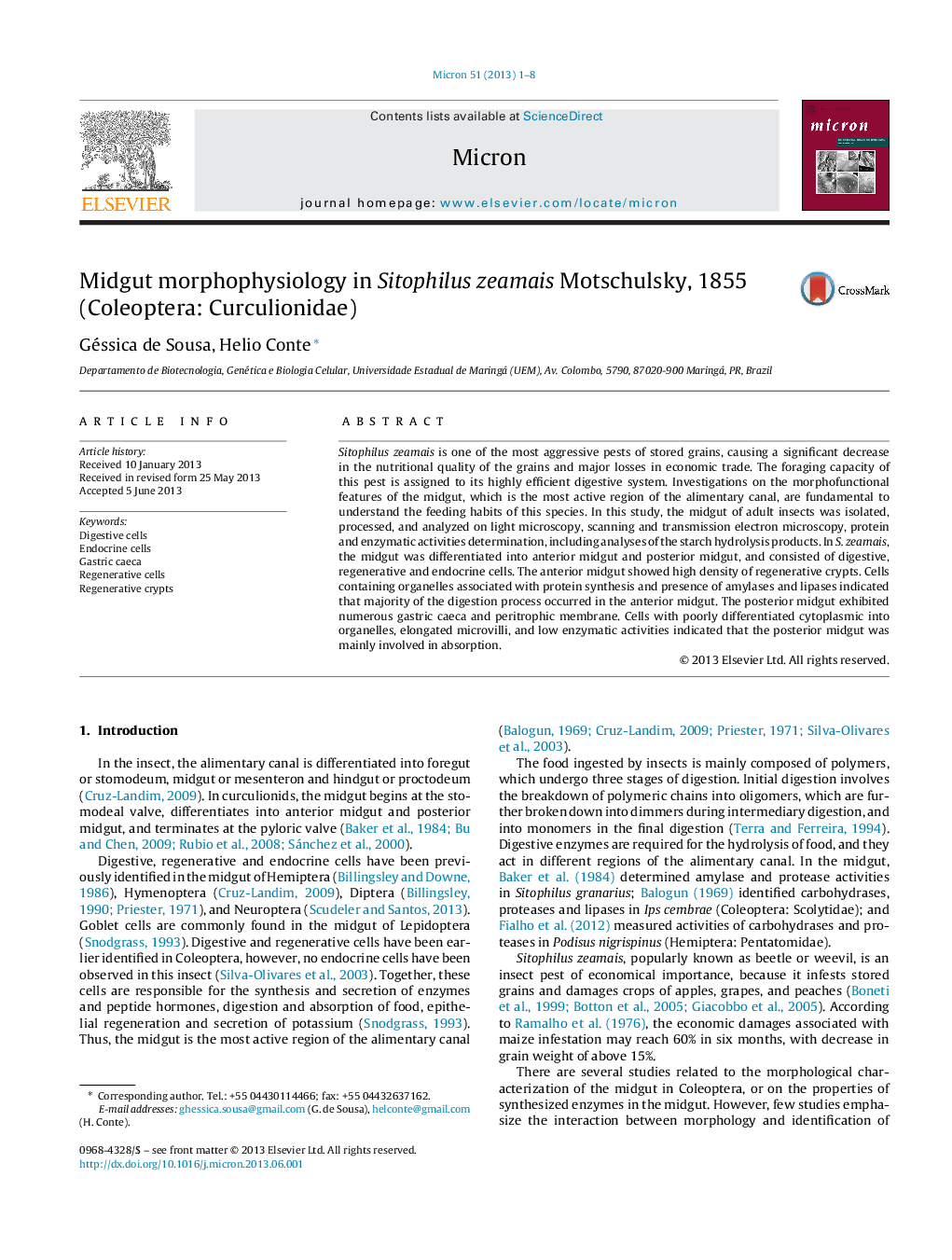| Article ID | Journal | Published Year | Pages | File Type |
|---|---|---|---|---|
| 7986846 | Micron | 2013 | 8 Pages |
Abstract
Sitophilus zeamais is one of the most aggressive pests of stored grains, causing a significant decrease in the nutritional quality of the grains and major losses in economic trade. The foraging capacity of this pest is assigned to its highly efficient digestive system. Investigations on the morphofunctional features of the midgut, which is the most active region of the alimentary canal, are fundamental to understand the feeding habits of this species. In this study, the midgut of adult insects was isolated, processed, and analyzed on light microscopy, scanning and transmission electron microscopy, protein and enzymatic activities determination, including analyses of the starch hydrolysis products. In S. zeamais, the midgut was differentiated into anterior midgut and posterior midgut, and consisted of digestive, regenerative and endocrine cells. The anterior midgut showed high density of regenerative crypts. Cells containing organelles associated with protein synthesis and presence of amylases and lipases indicated that majority of the digestion process occurred in the anterior midgut. The posterior midgut exhibited numerous gastric caeca and peritrophic membrane. Cells with poorly differentiated cytoplasmic into organelles, elongated microvilli, and low enzymatic activities indicated that the posterior midgut was mainly involved in absorption.
Related Topics
Physical Sciences and Engineering
Materials Science
Materials Science (General)
Authors
Géssica de Sousa, Helio Conte,
